Homestead in the Holler is a participant in the Amazon Services LLC Associates Program, an affiliate advertising program designed to provide a means for sites to earn advertising fees by advertising and linking to amazon.com.
Fall is my favorite season. It’s no longer blazing hot and the leaves turn into their magical colors. Have you ever considered growing a fall garden? The temperatures are more moderate, most of the problematic bugs have gone and a lot of greens thrive in the cooler temperatures. What’s not to love about that?
Starting your cool weather crops in the summer, whether transplanting seedlings started indoors or direct sowing, can be a challenge. Some crops need to be started when the sun is still hot. Those tender seedlings can wither in a hurry if not cared for and protected.
The effort of protecting your seedlings is well worth it! A lot of cool weather crops taste so much better with the cool temperatures. Plus going out and picking your own salad in October or November never gets old. You don’t need a greenhouse to keep your garden going well into late fall.
What can you do to protect your fall garden?
Tips for a Successful Fall Garden
Prepare soil
Just like in the spring, you need to prepare the soil before planting in the fall. I top dress my garden beds with composted goat manure from our goat barn or rabbit poo before planting any time of the year. The better the soil, the better the crop!
Water
Water is always important, but it is even more so for fall crops. The soil dries out quickly this time of year, which simply will not do for direct sowing seeds for slower to germinate veggies, such as carrots or parsnips. Soil needs to be kept moist around 7-10 days. Once the seedlings emerge, they will still require moist soil, the seedlings will dry out as quickly as the soil this time of year. The best way to keep moisture in the soil is with mulch.
Mulch
Mulch, mulch and more mulch! Mulch is a must in the garden any time of the year. Besides weed control, a thick layer of mulch will keep the soil warm and will protect plants from light frosts in the fall. Think of it as a nice layer of insulation. I have used straw and wood chips as mulch and have had great results with both. As long as the bare earth is covered, preferably with something that will break down and give you more organic matter and soil, you are set!
If you want to keep your garden going during hard frosts, you need to go one step further.
Row Cover
Row cover is the best way to extend the season and to protect your crops without purchasing a greenhouse. It is also called garden fabric, or floating row covers. You’re basically making a mini greenhouse right over a garden bed in your garden. Row cover will make your fall gardening a smashing success!
Here’s what row covers will do for you:
- Protect your seedlings from the hot summer sun by filtering the sunlight.
- Protect plants from frosts
- A barrier for insect pest control
Agribon is the brand of row cover that I use. It’s a non-woven fabric that is ultra light weight and will protect plants from frost. You get varying degrees of protection with Agribon as it comes in different grades that still allowing light, water and air to pass through. This cans be used to extend your growing season spring and fall. I use AG30, which is a medium weight row cover and will protect plants down to 26F. Add in a thick mulch layer and you can move that number down a few more degrees! Agribon comes in a large roll, you cut it to the length you need to cover any size garden bed that you wish. AG30 row cover was a game changer for me and my success in extending the season.
How To Use Row Cover
How you use the row cover is up to you. You can lay the cover down over top of your garden bed or you can make a mini hoop house right over your garden bed. I prefer to make a mini hoop house. This way I can plant, water and mulch my fall garden and then cover it up right away for protection. PVC pipes can be used or you can buy a pipe bender to use metal pipes.
I have been able harvest spinach and lettuce well into December here in southern Missouri. Kale has grown all winter! This fall I plan to try root crops under the row cover. I have successfully started carrots and beets in February under row cover but haven’t tried root crops in the fall. Keep in mind that the cooler temperatures and shorter days will slow down the growth, but you’ll still get a harvest!
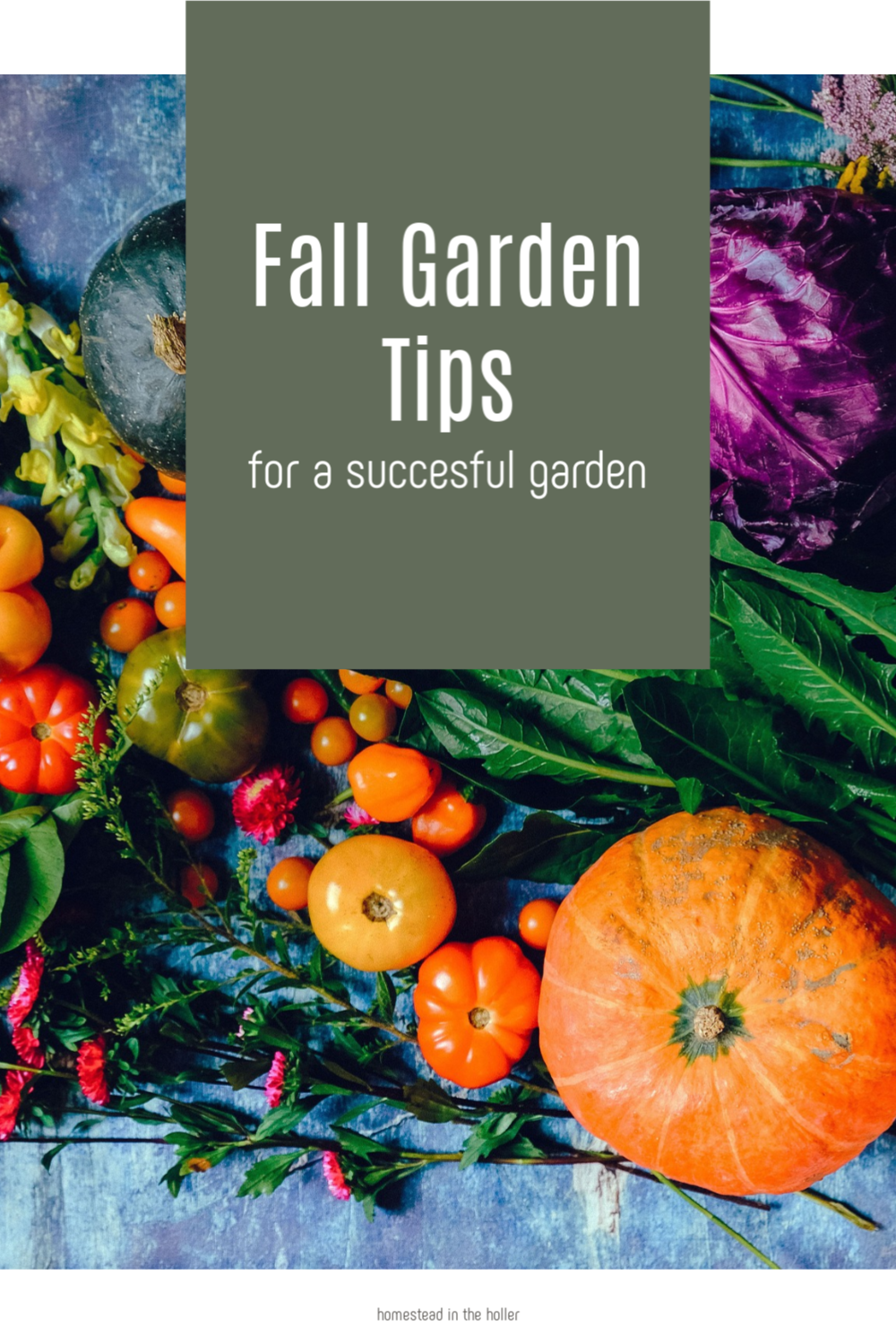
I’ve teamed up with some amazing homestead bloggers who offer their tips for a successful fall garden. There is a lot of great advice here!
The Farmer’s Lamp – 7 Tips For Preparing the Fall Garden
Our Good Life – Bouquets From My Cutting Garden 2018
Midlife Blogger – D is for Discouraging
Clarissa R. West – Backyard Garden Basics For Homemakers with FREE Printable
Spring Lake Homestead – A Fall Garden with the Kids
Oak Hill Homestead – When to Plant a Fall Garden
The Inquisitive Farmwife – Gardening Woes, but it’s NOT to late!
Faithful Homestead – Fall Gardening in a Drought
Happy gardening!
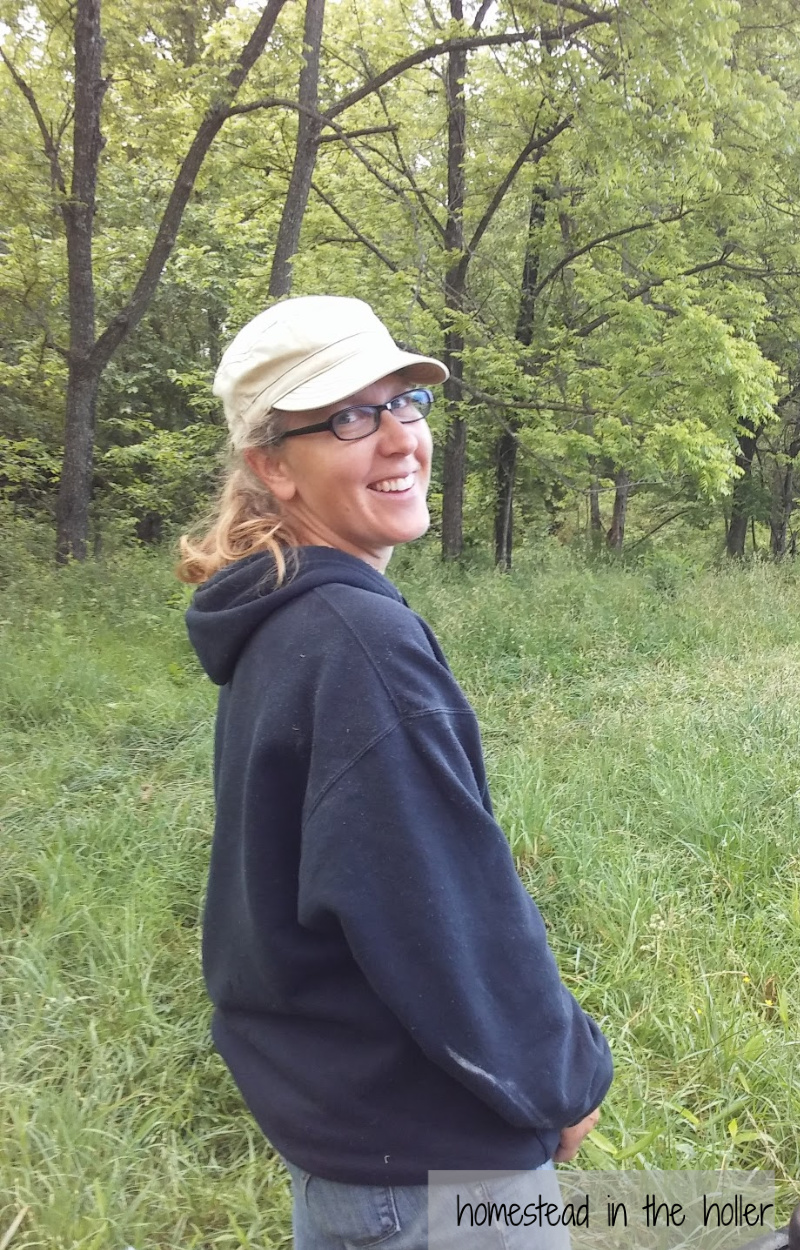
Hi! Around here I wear many hats. Homesteader, farmer, homemaker, homeschool mom, gardener and builder. We strive for a simple, self-sufficient life on our little piece of paradise. Read more

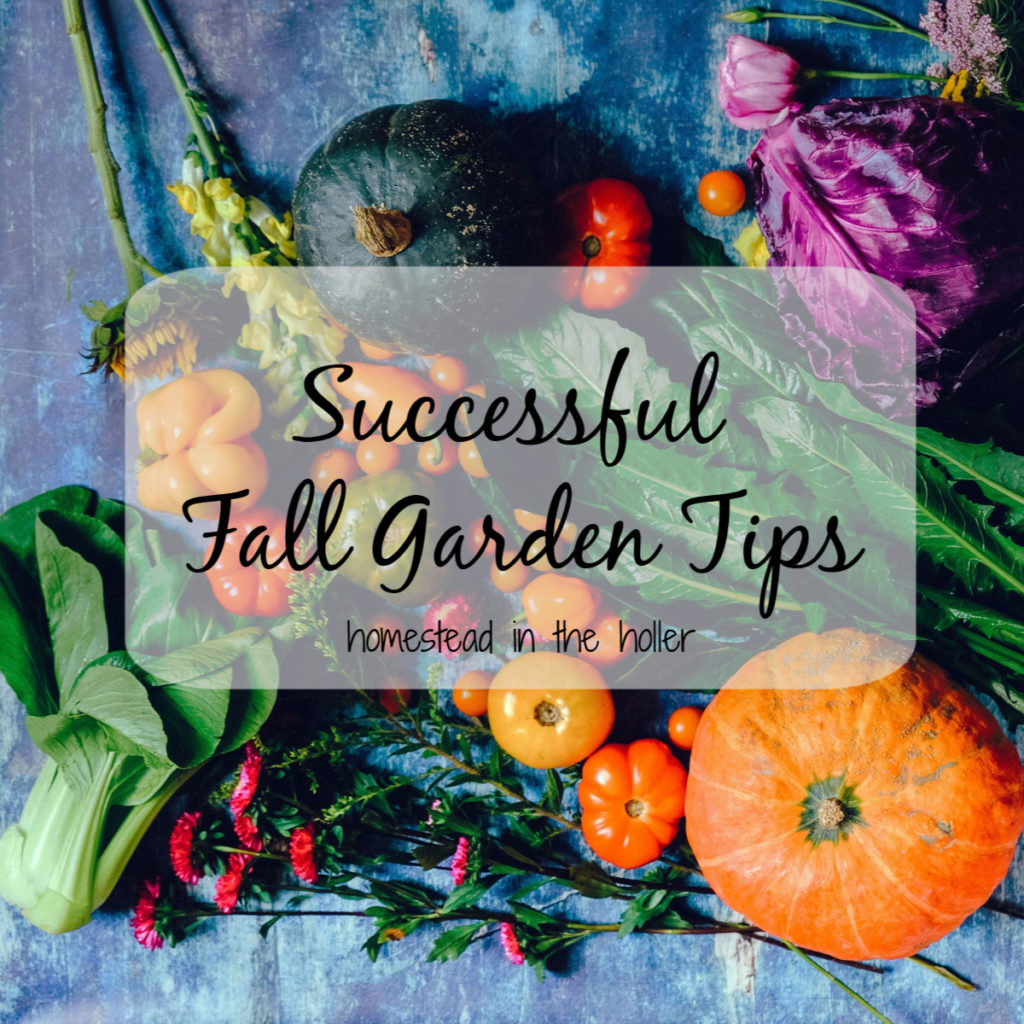
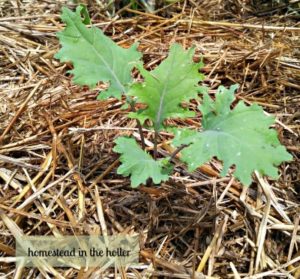
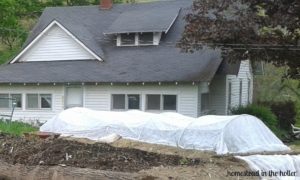

Pingback: D is for Discouraging ~ Mid-Life Blogger
Pingback: A Fall Garden with the Kids - Spring Lake Homestead
Pingback: What every gardener needs to know about egg shells » SoulyRested